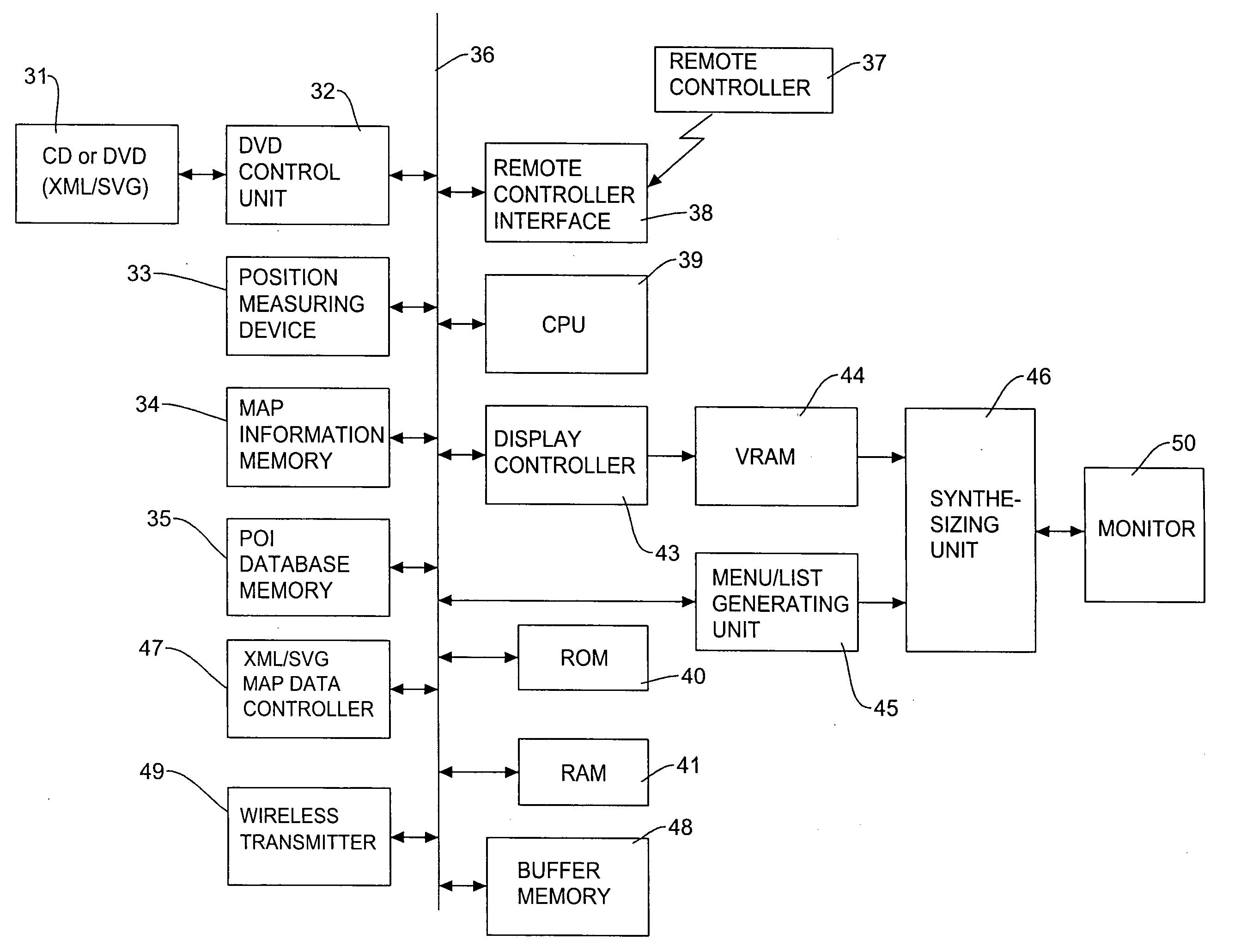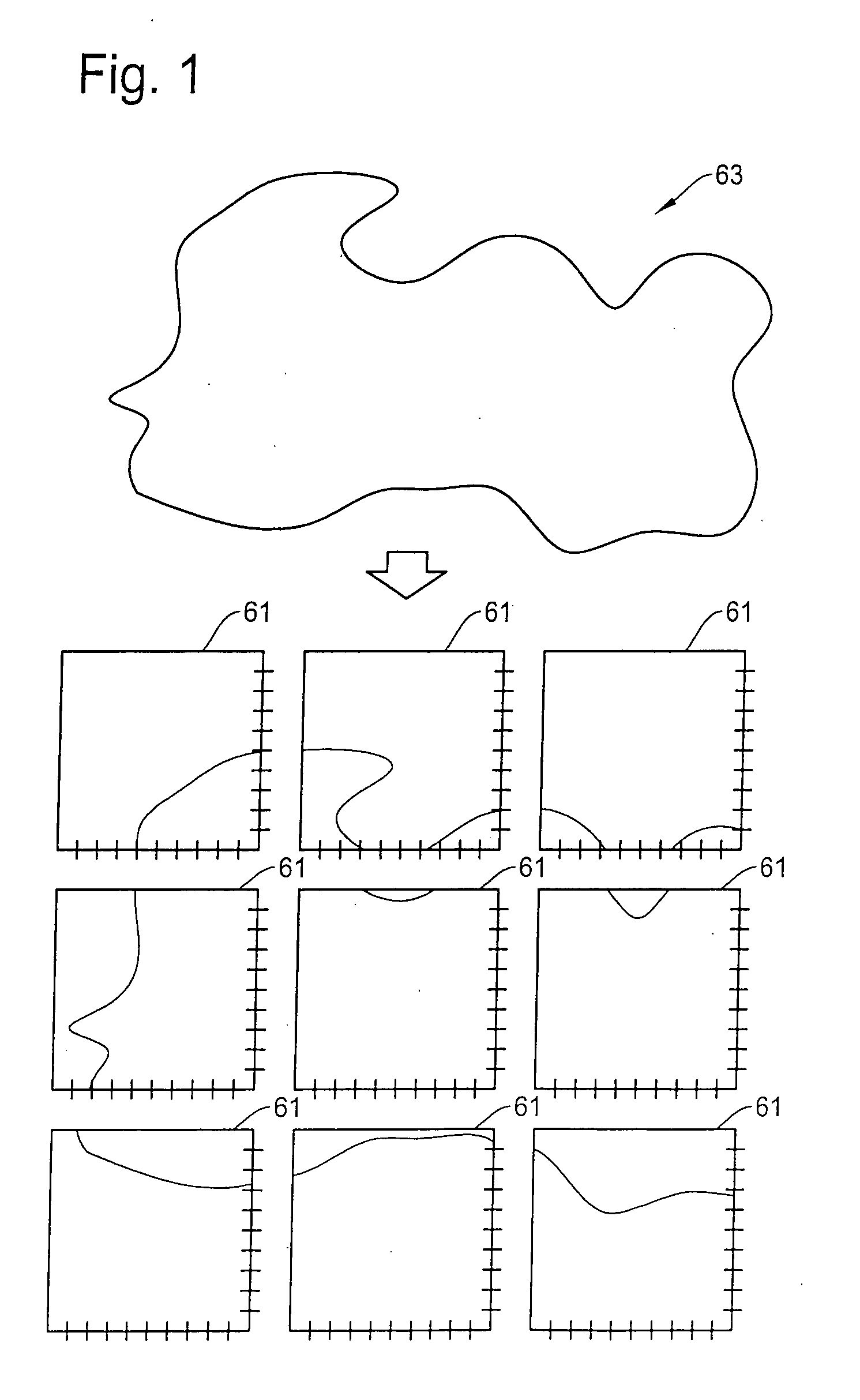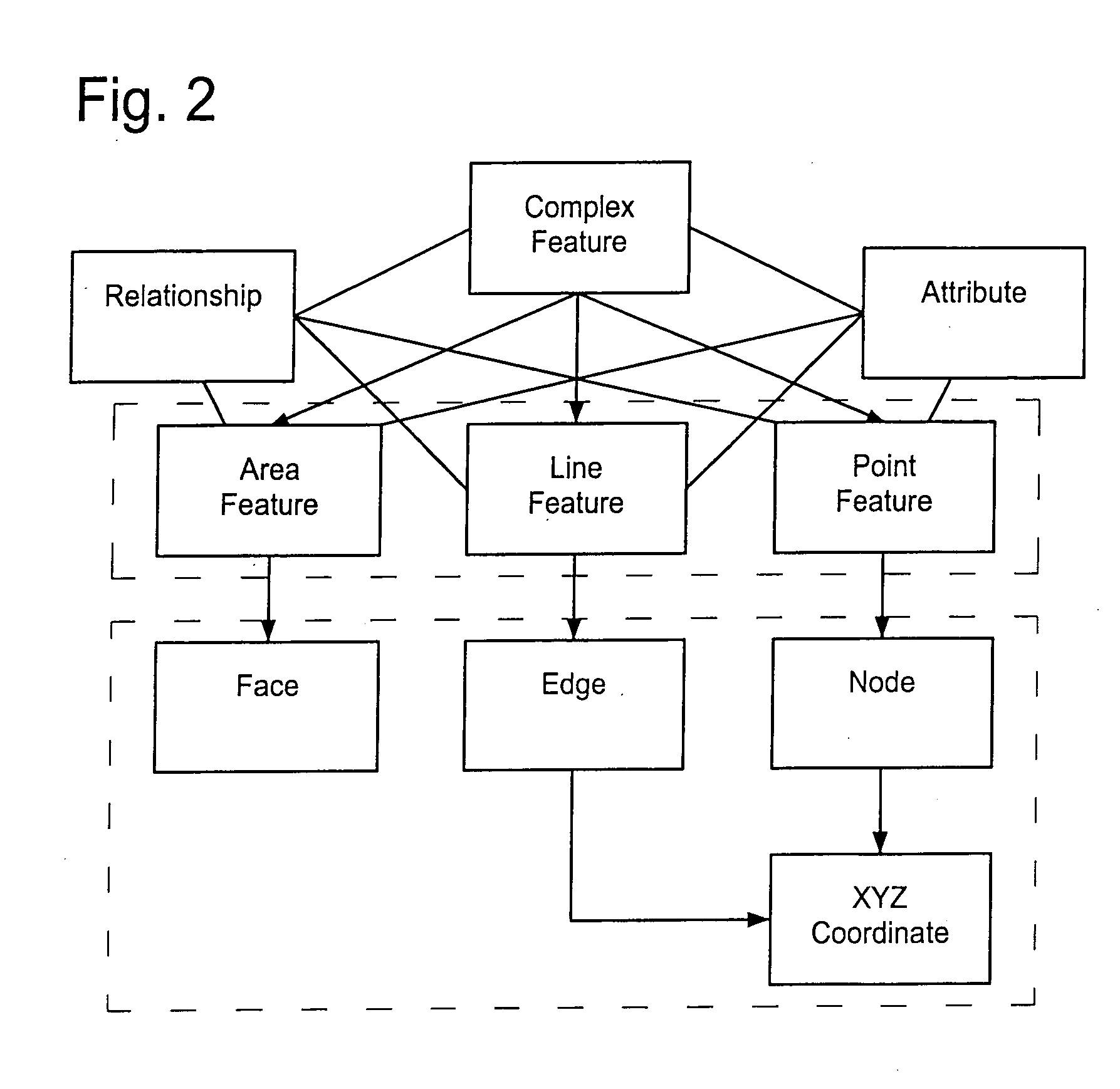Navigation system utilizing XML/SVG map data converted from geographic map data and layered structure of XML/SVG map data based on administrative regions
a navigation system and geographic map technology, applied in the field of navigation system utilizing xml/svg map data converted from geographic map data and layered structure of xml/svg map data based on administrative regions, can solve the problems of increasing the conversion time and labor, not always well suited for a navigation system, and increasing the chances of causing inconsistencies between adjacent meshed portions, etc., to achieve the effect of reducing the time required for data conversion and easy modification
- Summary
- Abstract
- Description
- Claims
- Application Information
AI Technical Summary
Benefits of technology
Problems solved by technology
Method used
Image
Examples
Embodiment Construction
[0036]The navigation system of the present invention will be described in more detail with reference to the accompanying drawings. The navigation system of the present invention utilizes map data in an extensible markup language (XML) and scalable vector graphics (SVG) format converted from geographic data such as GDF (geographic data file). The map data in the XML / SVG format for the navigation system is further constructed in a layered structure, i.e., having a plurality of different levels, based on administrative jurisdictions such as cities, counties, and states.
[0037]It should be noted that although the present invention will be described for the case of converting the GDF map data to the XML / SVG map data for an illustration purpose, geographic data other than GDF can also be used in the present invention. It should also be noted that the specific names, XML and SVG, are used in the present invention for describing the languages or formats of the map data only for an illustrati...
PUM
 Login to View More
Login to View More Abstract
Description
Claims
Application Information
 Login to View More
Login to View More - R&D
- Intellectual Property
- Life Sciences
- Materials
- Tech Scout
- Unparalleled Data Quality
- Higher Quality Content
- 60% Fewer Hallucinations
Browse by: Latest US Patents, China's latest patents, Technical Efficacy Thesaurus, Application Domain, Technology Topic, Popular Technical Reports.
© 2025 PatSnap. All rights reserved.Legal|Privacy policy|Modern Slavery Act Transparency Statement|Sitemap|About US| Contact US: help@patsnap.com



